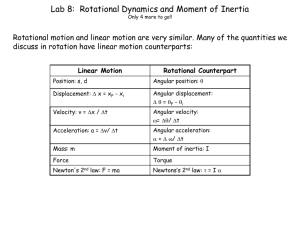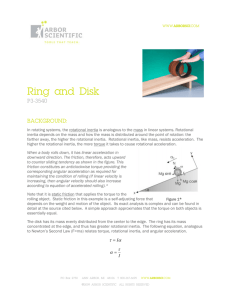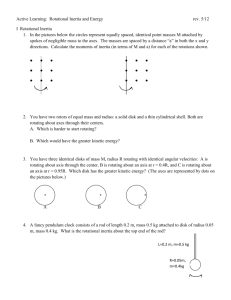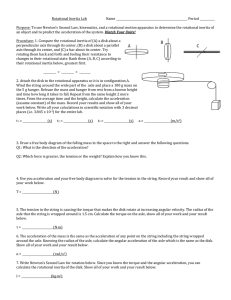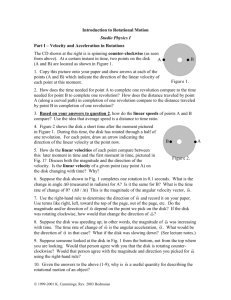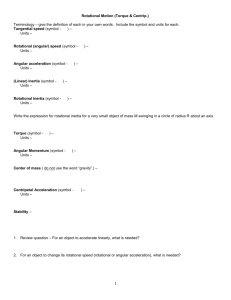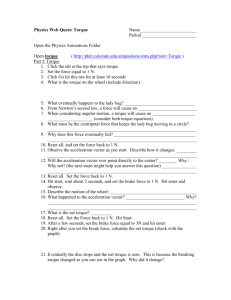Rotational Dynamics (RD)
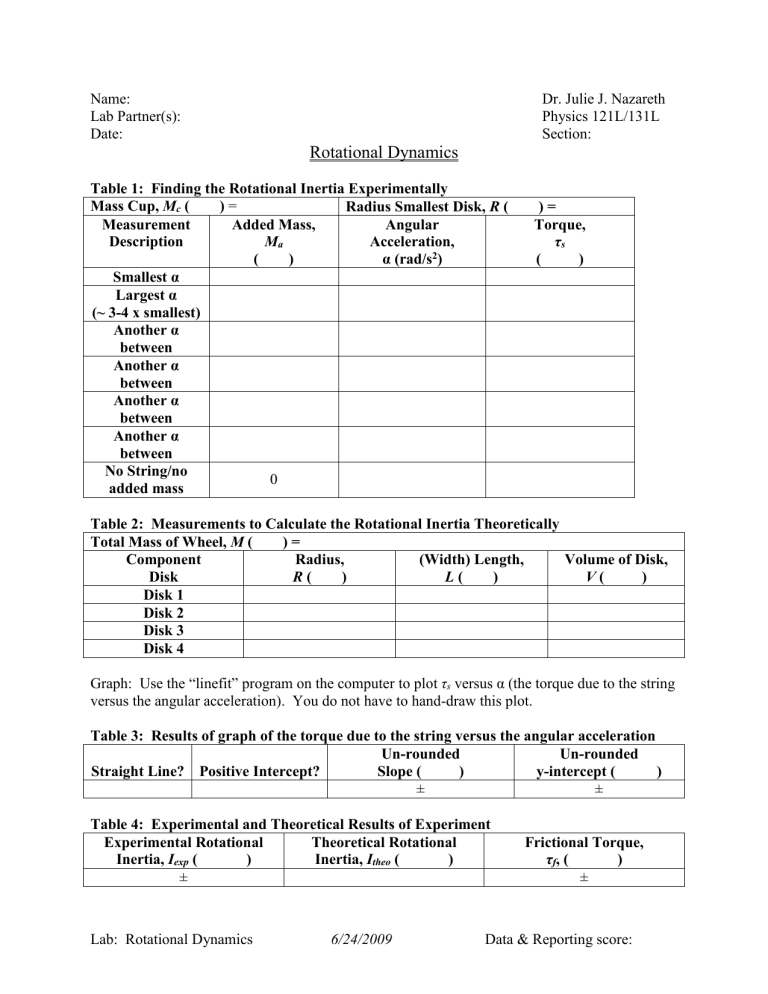
Name:
Lab Partner(s):
Date:
Dr. Julie J. Nazareth
Physics 121L/131L
Section:
Rotational Dynamics
Table 1: Finding the Rotational Inertia Experimentally
Mass Cup, M c
( ) =
Measurement Added Mass,
Description M a
( )
Radius Smallest Disk, R ( ) =
Angular
Acceleration,
α (rad/s 2 )
Torque,
τ s
( )
Smallest α
Largest α
(~ 3-4 x smallest)
Another α between
Another α between
Another α between
Another α between
No String/no added mass
0
Table 2: Measurements to Calculate the Rotational Inertia Theoretically
Total Mass of Wheel, M ( ) =
Component Radius,
Disk
Disk 1
R ( )
Disk 2
Disk 3
(Width) Length,
L ( )
Volume of Disk,
V ( )
Disk 4
Graph: Use the “linefit” program on the computer to plot τ s
versus α (the torque due to the string versus the angular acceleration). You do not have to hand-draw this plot.
Table 3: Results of graph of the torque due to the string versus the angular acceleration
Straight Line?
Positive Intercept?
Un-rounded
Slope ( )
±
Table 4: Experimental and Theoretical Results of Experiment
Un-rounded y-intercept ( )
±
Experimental Rotational
Inertia, I exp
( )
±
Theoretical Rotational
Inertia, I theo
( )
Frictional Torque,
τ f
, ( )
±
Lab: Rotational Dynamics 6/24/2009 Data & Reporting score:
Calculations: Show the following calculations below or on an attached sheet of paper. Include units in your calculations. Remember to keep two extra significant digits during your calculation and only round in the very last step.
Sample calculation of torque,
τ s
:
Sample calculation of volume of a single disk, V
1
:
Calculation of theoretical rotational inertia, I theo
:
Extra Credit Questions. Assume you have the same wheel (composed of several disks stuck together) as you had during the experiment. Assume also that the frictional torque is the same and you use the same added mass values for your cup. Instead of wrapping the string around the disk with the smallest radius, you wrap it around the disk with the largest radius.
You then take more data.
1. Should your values of torque,
τ s
, and angular acceleration, α, be the same or different? If different, are they smaller or larger than the data from the original experiment? Explain why.
2. Should the new data points plot on the same line (same slope and same y-intercept) as you had during the original experiment, or would the best fit line be different? Explain why.
Don’t forget to write your summary!
(As always, start your paragraph with an introductory sentence that states your goal or purpose in doing the lab. In your summary, be sure to discuss whether your results support equation 5 that was derived from Newton’s 2 nd
law. Compare the experimental and theoretical values for I that you obtained in parts A and B. Do they agree within uncertainty? If the values are close but do not agree within uncertainty, what might have affected your experiment. If your experimental and theoretical values are not close, ask the instructor right away because you probably made a mistake! Give the numerical results for parts
A and B as a part of your discussion.)
Lab: Rotational Dynamics 6/24/2009
